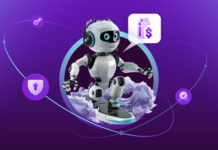At-home service is easily the most popular venue for customer interactions, with dial-in phone still being a staple support channel for many financial institutions. With customers looking more for self-service options now than ever, the traditional IVR systems still in use by a large portion of the financial services industry are beginning to show their age. Typical touch-tone phone systems have proven to be a thorn in the side for many callers, with slow and confusing labyrinths of menus that aren’t always clear about where the information a user needs lies, if it’s even there at all.
Microsoft research suggests that 90% of financial institution customers expect self-service options, including AI-powered chat and messaging. This is surely leading to high abandonment rates that typical IVR solutions see, with many callers becoming frustrated with the rudimentary systems and seeking one of your reps instead (when they’d otherwise rather solve the issue themselves). It’s clear that these aging systems are becoming more trouble than they’re worth, and many institutions are seeking a way out that provides a more intuitive experience.
Telephone Self-Service, Without Clunky Touch-Tone Menus
AI is transforming the customer service space, replacing dated menu based IVR solutions with powerful AI that callers simply talk to. This means that rather than the typical experience of slowly working towards your topic of interest through button presses, new AI powered phone assistants allow callers to get answers to find information, complete banking tasks and be routed to agents teams simply by speaking to the AI in their own natural language.
These systems are gaining traction for their ability to provide a more intuitive self-service experience over the phone. Providing users with the same kind of intelligent, guided experience that they could expect from a chat-based conversational AI through dial-in phone gives users the option for solving their common banking problems on their own no matter which channel they prefer to use.
As these new systems begin to gain in popularity, however, it becomes more evident that not all of them are created equal. The usefulness of these dial-in conversational AI solutions is dependent on how well they can understand the needs of your users, and how connected they are to the other systems that make up your customer service infrastructure.
Intelligent, Integrated, and Intuitive: Choosing a Voice AI Solution
When looking to upgrade to a conversational AI-powered IVR for your financial institution, one crucial element of success is ensuring that the solution is purpose-built for your industry. Many AI solutions available are generic, built for any industry. This means these solutions have to work for anyone –a car dealership, a university, a hospital–as well as your financial institution. The result is AI models and virtual assistants that still need a lot of configuration, personalization, and complex AI training in order to work well for you.
Related to the above, another key factor to be considered is whether or not the solution has pre-integrations with your existing Online Banking (OLB) or Core Banking Platform. Your call center likely still receives a large volume of calls from account holders who want to check their balance, know what their recent transactions were, or complete other highly repetitive banking tasks. These types of calls can often account for 25% or more of calls received and they are exactly the type of calls that can and should be automated. As a result, a good Conversational AI will be able to do more than just route users to your staff, but also allow users to perform simple banking tasks right there over the phone through voice commands alone. This truly elevates the solution from simply an improvement to a powerful self-service tool that lightens the load on your already overburdened contact center.
Lastly, not all calls can or should be automated. When you are looking to upgrade your touch-tone IVR system, the solution you choose should be seamlessly integrated with your human agents. Many systems are not, and the result is that more complex needs that require the human touch are handed over without any of the prior context of what the caller was asking about. The best solutions seamlessly integrate AI with human agents, transferring the full context of the conversation so that the caller doesn’t have to repeat themselves. A disconnected, siloed solution won’t be able to provide effortless routing to your reps, creating a less-than-satisfying experience.
The Glia Virtual Assistant (GVA) is a powerful AI assistant designed for both digital and phone-based service. As a conversational IVR for your dial-in phone channels, the GVA is fully integrated both with the full Glia Interaction Platform as well as most OLB providers to offer full functionality to phone-callers. Specifically built for the financial industry, it can guide callers to the banking information they need, improving the overall experience over traditional touch-tone IVR solutions.





